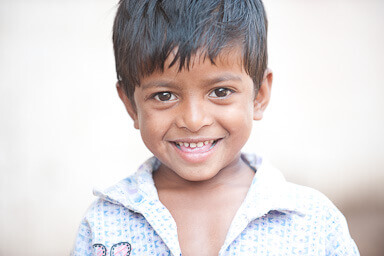Mandy SlutskerACTION
Mandy Slutsker is a Senior Project Associate at ACTION, a partnership of locally rooted organizations around the world that advocate for life-saving care for millions of people who are threatened by preventable diseases.
In this guest post, Mandy Slutsker, senior project associate with the ACTION Partnership, writes about a new report that calls for increased efforts to fight tuberculosis among children worldwide.
When Sipho* was just 18 months old, he began coughing and his feet began to swell.
His mother Masia was sent home from a clinic near their home in Swaziland with medicine for a common cold, but his condition only worsened. Eventually, Sipho was diagnosed with a drug-resistant strain of tuberculosis (TB)—and so began an exhausting daily odyssey for him and Masia.
Every day for six months, the pair traveled six kilometers so Sipho could receive a grueling treatment regimen of injections and crushed pills.
Despite recent progress toward addressing childhood TB at the global level, children like Sipho are still misdiagnosed and subject to harsh treatment regimens meant for adults.

As an advocate, I am thrilled to see childhood TB receive this attention—the issue gained recognition at international conferences, served as the theme of this year’s World TB Day, and is the subject of new guidelines from the World Health Organization.
But I can’t forget TB takes the lives of 1.4 million people every year—and children remain largely unreached and uncounted. If we want to end TB as a killer of children, we need to do more than just talk. It’s time for action.
Unfortunately, many barriers stand in our way—a lack of political will, inadequate funding for TB programs, and failure to invest in research and development (R&D) for child-friendly diagnostics, drugs, and vaccines.
The standard microscope method available in many high-burden countries to diagnose TB largely isn’t effective in children, few child-friendly TB drugs exist, and the current TB vaccine fails to protect both children and adults against the most common form of the disease.
How do we overcome these challenges? In my opinion, it all comes down to advocacy.
It’s time for civil society, healthcare workers, governments, and the private sector to come together and ensure no child dies from this preventable and treatable disease.
Civil society must mobilize to ensure governments and donors quickly invest additional resources in R&D to create new child-friendly diagnostics, drugs, and vaccines. In addition to R&D investments, we have to ensure new treatments—and better formulations of existing treatments—can reach children as quickly as possible. So donors, the private sector, and regulatory authorities must all work together to clarify the development pathway for childhood TB drugs.
For too long we’ve worked in silos, not communicating with one another. We each have a role to play. We’ve built the momentum, now it’s time to act.
Read the full brief, Children and Tuberculosis: From Neglect to Action, at Action.org and join the #kidsTB #putkids1st conversation on Twitter.
*Names have been changed to ensure confidentiality